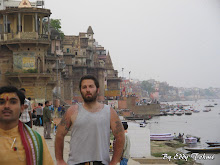by Eddy Tohmé
Mesopotamia, literally "the land between the two rivers," describes the region in southwest Asia that was the home of many civilizations over a period of 3000 years. The earliest of these civilizations appeared around 3500 B.C.E. at Sumer, where the Tigris and Euphrates Rivers empty into the Persian Gulf .Watered by these two rivers, the rich soil made agricultural life possible and supported the growth of humankind's first cities: Uruk, Ur, Kish, Nippur, and Lagash. In contrast with the Nile River, which flooded its banks with comfortable regularity, the two rivers essential to food production in Mesopotamia overflowed unpredictably, often devastating whole villages and cities. Unlike Egypt, whose natural boundaries of desert and water worked to protect the civilization from foreign invasion, Mesopotamia's exposed and fertile plains invited the repeated attacks of tribal nomads, who descended from the mountainous regions north of the Fertile Crescent. And while Egypt's climate was regularly hot and dry, Mesopotamia suffered fierce changes of weather, including drought, violent rainstorms, flood, wind, and hail. Mesopotamia's unpredictable rivers and its vulnerable geographic situation contributed to the mood of fear and insecurity that is reflected in all forms of Mesopotamian expression...











No comments:
Post a Comment